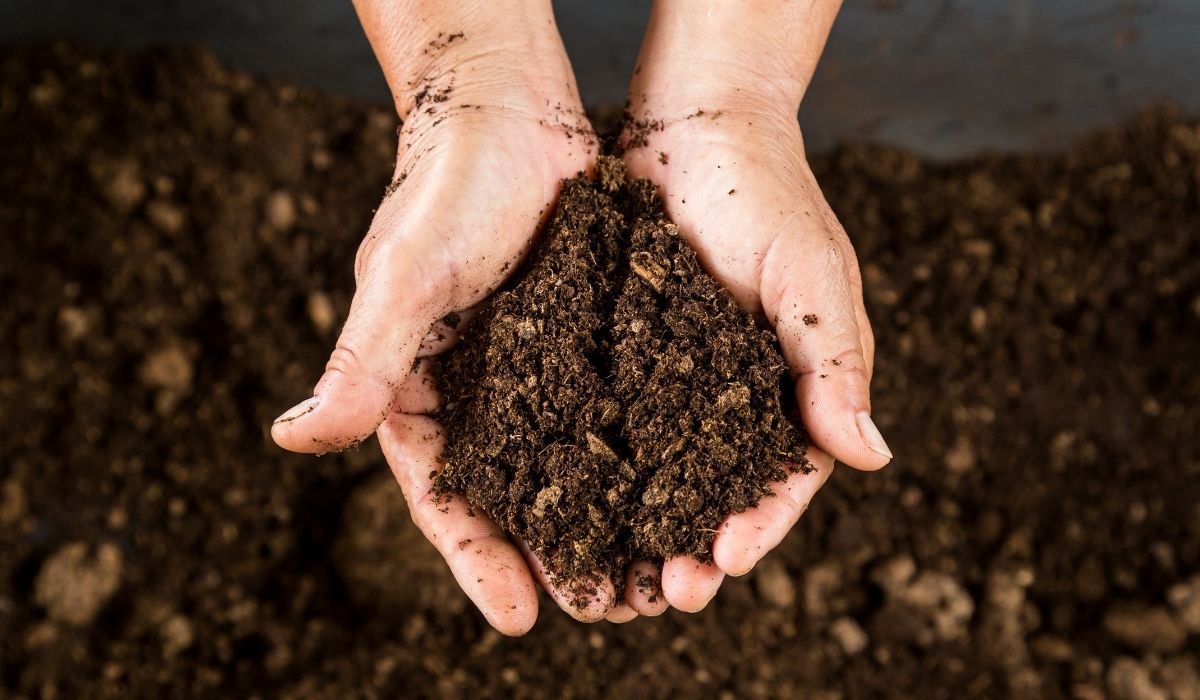Code of Practice for Agricultural Environmental Management – Agricultural Composting
Only specific types of materials can be composted. Also, where composting takes place and how it is distributed and used is managed by the Code of Practice for Agricultural Environmental Management.
In composting, agricultural by-products like manure, vegetative material, solid animal bedding, wood residue, processing waste, and mortalities are combined and managed using a system that decomposes the by-products in an environment rich with oxygen. If you are storing any of these by-products, you are not composting—proper composting consists of actively managing the process.
As a general rule, collect and contain leachate, ensure rain or stormwater runoff does not enter any piles, and prevent contaminants from entering watercourses, leaving your property boundary, or going below the water table. Also, ensure that all wildlife cannot access your composting area or piles that are outside.
For more specific rules, please visit: https://www2.gov.bc.ca/gov/content/environment/waste-management/industrial-waste/agriculture/regulation-requirements/agricultural-composting
Pain Points
Reference: http://www.omafra.gov.on.ca/english/engineer/facts/05-023.htm
Farmers must choose their composting site carefully to reduce the potential for environmental impact and respect neighbouring land uses. Airborne emissions and water management are the primary risk factors for composting, so farmers need to address off-site and on-site water runoffs.
Another primary pain point and a cause of friction with neighbours are composting odours—these need to be carefully managed when using odorous materials. Even well-maintained piles can result in foul odour or ammonia emissions.
Some materials can attract birds, rodents and insects, so strategies need to be devised to reduce vector attraction and, as always, to alleviate impacts to neighbouring land uses. Noise and traffic may also be a concern, so it is essential to work with your neighbours to reduce problems.
Here are some advantages vs disadvantages that could impact the way farmers approach agricultural composting:
Advantages
- Reduce/eliminate pathogens
- Reduce volume and moisture content
- Reduces viable weed seeds
- Reduces insect larvae (fly problems)
- Reduce odour
- Stabilize organic components and nutrients
- Produce a soil amendment/fertilizer
Disadvantages
- Pathogen control requires high temperatures and proper aeration
- Often requires additional bulking material (carbon)
- Long processing time
- Poorly run processes achieve very little
- Land required for composting and storage areas
- May require a significant investment
- Requires more labour
The Importance of Monitoring and Record-Keeping
To make good compost, farmers must monitor and respond to changes as they occur. By keeping good records, farmers can improve compost quality and keep track of when compost was turned and the compost’s conditions at specific times. The temperature must also be closely monitored as some standard operating procedures require a daily temperature recording during the active phase.
When inserting a thermometer into the centre of a pile, it should have a one metre or three-foot stem with a 0-80 °C temperature range. The thermometer should be inserted in several locations while taking note of moisture conditions and the presence of odours. Any bad smells may be an indication of anaerobic activity or minimal presence of oxygen. The smell of ammonia may indicate high nitrogen content, indicating a need for more carbon material.
How Agrilyze Can Help
Through the tools and technologies that Agrilyze offers, farmers can build new skill sets and the technical competence to make smarter decisions that will help them manage agricultural composting more effectively.
- Understand where property boundaries, watercourses and aquifers are in relation to where composting is taking place (Map My Farm)
- Have quick and easy access to relevant documentation related to composting, soil, water (linked legislative documents, best practices guides)
- Upload your own best practices documents; add photos, forms etc.
- Create specific tasks to track actions to provide audit-ready data (task management)
- Measure outputs with sensors (temp/moisture – IoT devices)
- Track nutrients in compost and understand where to apply it to (soil testing)
- Analyze detailed information over time (analytics)
- Access nutrient management calculator (how to do it)
For an excellent overview of composting basics, check out this document – https://www.conseildesfemmesnb.ca/content/dam/gnb/Departments/10/pdf/Agriculture/Compost-BasicsOfOnFarmComposting.pdf.
If you have feedback about this post or would like us to explore a particular topic, please let us know by sending an email to [email protected].
Read the Code of Practice for Agricultural Environmental Management – Introduction (with infographic) – https://agrilyze.ca/code-of-practice-for-agricultural-environmental-management-introduction/.



